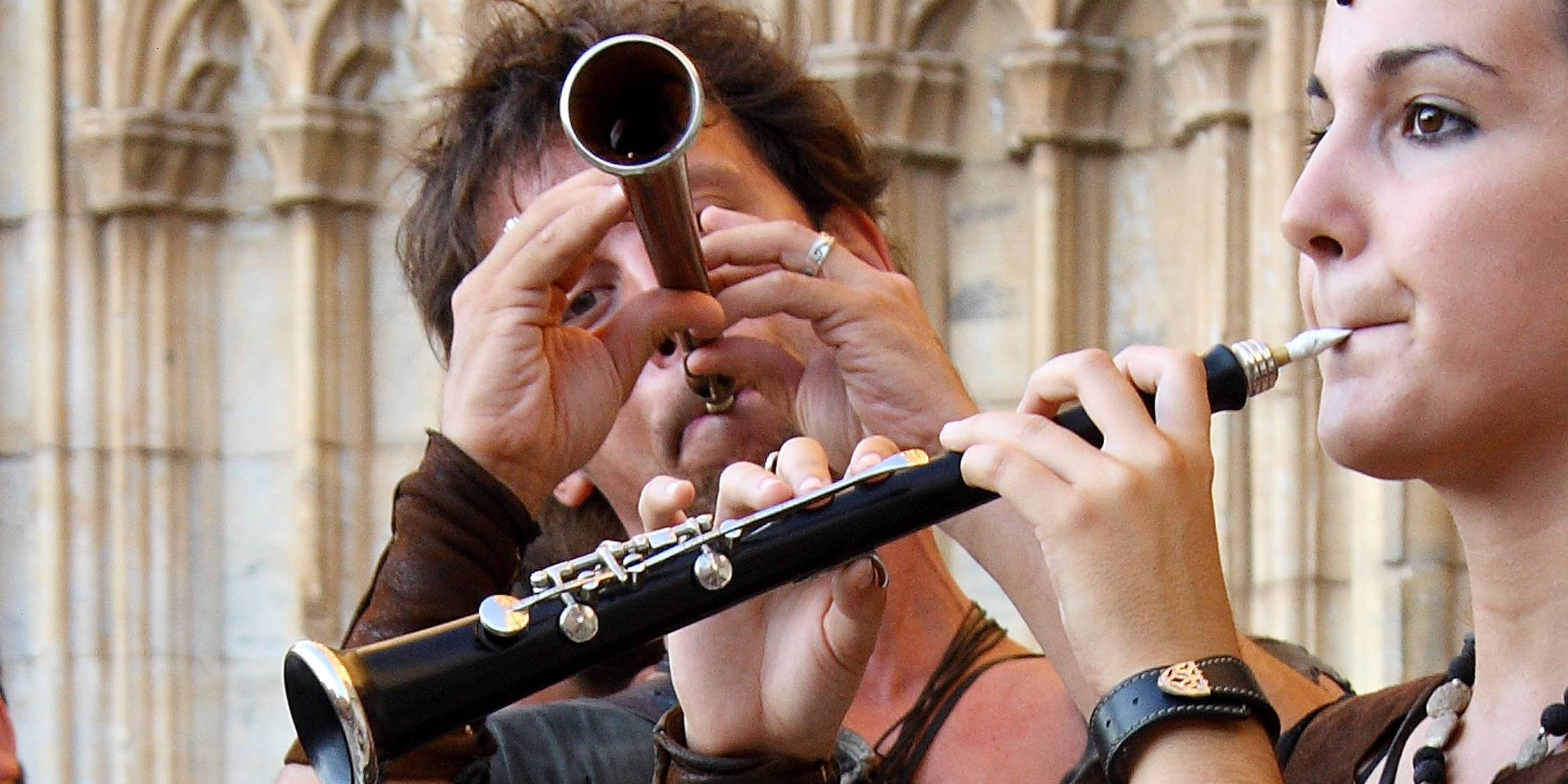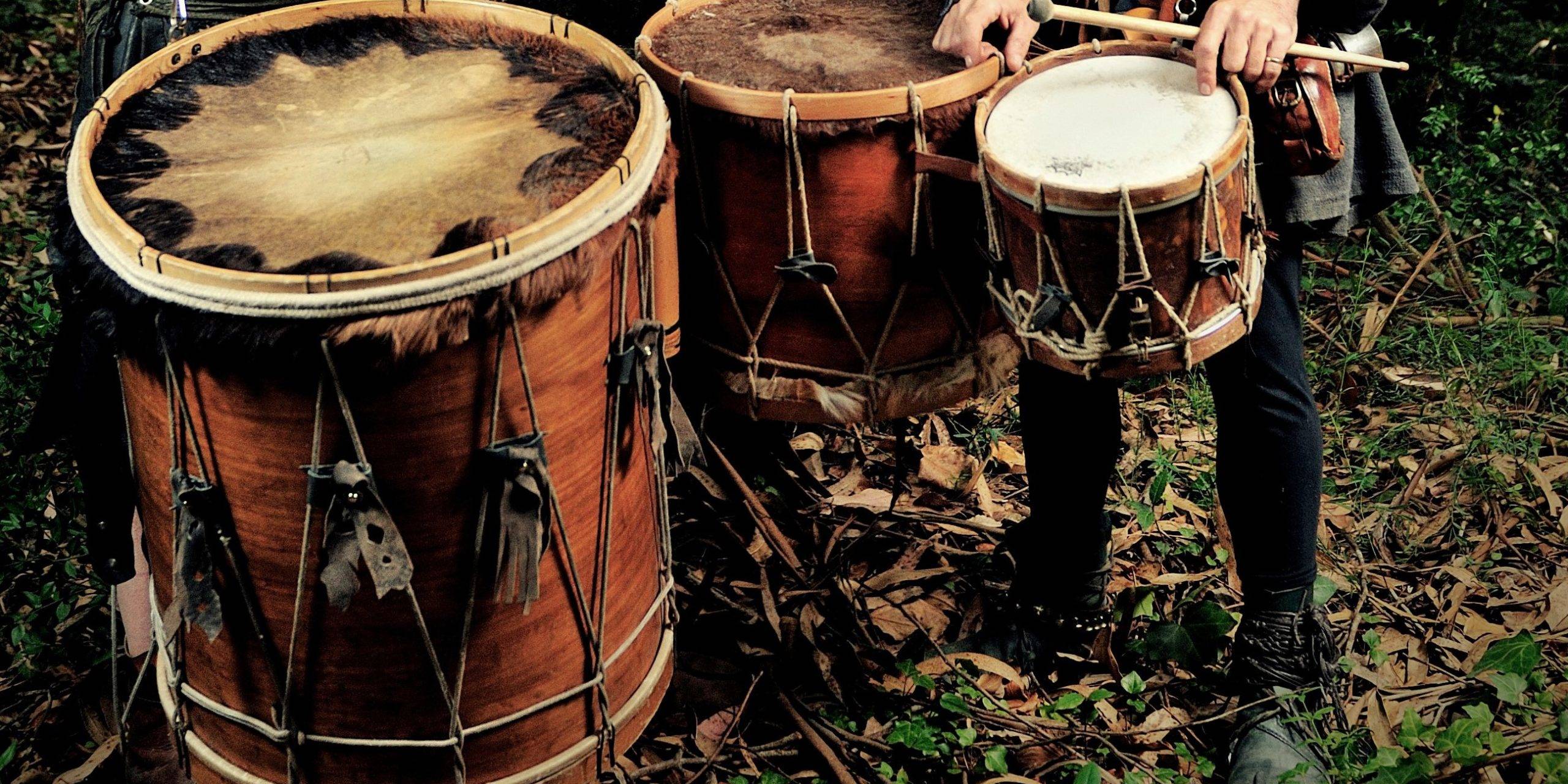The biniou (meaning bagpipe in Breton), also called the biniou-bihan (small bagpipe) and more pejoratively the biniu-kozh (old bagpipe), is the traditional bagpipe from Brittany and, along with the bombard, possibly the most widespread traditional instrument in the region. Records show that the biniou has existed since prior to the seventeenth century. These two instruments make up the basic formation of traditional Breton music: the sonerion (meaning ‘musician’ in a dialect of the Breton language), a bombard duet and the biniou are usually seen performing in any local festival or fest-noz (literally, night parties).
Since the beginning of the twentieth century the biniou has found a rival in the biniou braz, or the big bagpipe –the Scottish Great Highland bagpipe–, which because of its popularity, tonal characteristics and force, is an ideal instrument for another very popular Breton musical band, the bagad. The bagad is made up of many musical instruments–there are bombards, Scottish bagpipes, percussion and electric instruments like the guitar and the bass, among others– and is inspired by traditional Breton music, although the arrangements are adapted to the canons of modern music.
Like all bagpipes, the biniou consists of a bag, the mouthpiece, the chanter and a drone which rests on the shoulder, as is the norm in the north of Europe. The traditional biniou is made of boxwood, has a double reed and does not have metal rings. The fingering is open and it has the singular characteristic of no hole for the thumb at the back of the chanter.
The main feature of the biniou is its size. It could be said to be a small gaita (Galician bagpipe) because the bag, the chanter and the drone are all a good deal smaller than those of any other bagpipe. In fact it is one of the smallest in Europe and is one of the bagpipes with the highest pitch in the world: it is generally an octave higher than other bagpipes. Until the nineteenth century the chanter or levriad of the biniou was larger, which meant it had double the register of the bombard, the instrument that accompanied it. At the beginning of the nineteenth century the chanter reduced in size and thus its register of high notes became very sharp and at times rather unpleasant to the ear in comparison to gentler bagpipes. The biniou’s small size means that it is often seen played by squeezing with both arms against the player’s chest.
The biniou that we use in Els Berros de la Cort is made by the Breton luthier Gilbert Hervieux (https://www.tudual-hervieux.com) tuned to C (G on the tonic). Although this is not considered to be the traditional tuning (B-flat), for some years Breton musicians have adapted to the new possibilities offered by having their traditional instrument tuned in the way most suited for it to be played with other instruments (G, A and C) and in a well-tuned scale.









